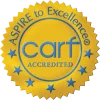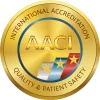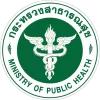Adopting a healthier diet when recovering from addiction or mental illness has a number of advantages. If you’ve been using alcohol or other substances heavily for a while, you may be at higher risk for a number of health problems, including cardiovascular disease, malnutrition, cancer, or obesity. A healthy diet helps offset this risk. Across the board, a healthy diet helps support better mood, clearer thinking, and having more energy. These are all extremely valuable for anyone trying to manage a mental health issue.
However, adopting a healthy diet is not always easy. Many of us have cultivated our bad eating habits for decades and are reluctant to change. When we do decide to change, we often go for a major overhaul, which might work for a week or two before we go back to our old ways. It’s much easier to adopt a healthy diet through a series of small improvements. Make one improvement and once that becomes easy, make another improvement. Here are some suggestions for how to do it.
Write Down Everything You Eat for a Week
Before you can do anything, you need a clear idea of what you actually eat every day. For at least a week, write down everything you eat right after you eat it. For an even clearer picture, write down how many calories are in everything you eat too. An app like MyFitnessPal can make this much easier and automatically tracks nutritional values. At the very least, take a picture of everything you eat before you eat it.
This has several advantages. First, most people are surprised how much they actually eat, and especially how many calories they eat. Looking back on the day, they remember the salmon they had for dinner or the eggs they had for breakfast but forget about the doughnuts at the office or the sodas at lunch. These things add up. Second, tracking your food cuts down on mindless eating. If snacking has become automatic for you, tracking everything you eat will help you regain conscious control over it.
Get Rid Of the Worst Thing in Your Diet
Once you have a clear idea of what you eat on a regular basis, find the worst thing and get rid of it. For most people, this will be fizzy drinks, assuming you have already quit drinking alcohol. Fizzy drinks are loaded with empty calories. They rot your teeth, ruin your skin, and make you fat. If you are recovering from an alcohol use disorder, you probably have low blood sugar and fizzy drinks will only make it worse by spiking your insulin. Your blood sugar will crash and you’ll feel irritable, achy, disoriented, and have trouble focusing. This is counterproductive no matter what you’re trying to recovery from.
If you don’t drink fizzy drinks, cut out anything that seems to be empty calories or loaded with extra sugar or omega-6 oils. Fried foods are a good candidate. Most food is fried in omega-6 vegetable oils that increase inflammation and make you feel awful. They are also loaded with calories. Avoiding them will make you feel better very quickly.
Replace the Worst Thing with Something Better
Sometimes cutting something out of your diet leaves a void. Replacing unhealthy foods instead of just trying to abstain is often the easier way to go. If you decided to cut out fizzy drinks, replace them with tea or water. Fruit juice is slightly better than fizzy drinks, but it also has tons of sugar and almost no fiber, so in the end you still get the excess calories and sugar. Tea is a good replacement for most people. In fact, in many places, tea is what people drank before companies like Coca-Cola spent billions convincing them to switch to fizzy drinks instead.
If fried food is what you need to cut out, just replace it with a grilled option. Most restaurants do this now. Instead of fried fish or prawns, get them grilled or pan-seared. It’s healthier and the flavor is often better. Go for the baked potato instead of the chips, and on.
Add Something Healthy
You’ve already made a big improvement to your diet just by cutting out the unhealthiest food and replacing it with something neutral or perhaps even healthy. The next easy step is to add one healthy thing to every meal. So maybe you still get the fettuccine alfredo, which may not be the healthiest thing on the menu, but you also get a side of steamed vegetables. Eat the vegetables first, then tuck into the fettuccine. You’ll get more nutritional value from your meal and you might decide to leave the last few bites of fettuccine on the plate.
Adopt Simple Rules
It’s hard for most people to stick with a complicated system of eating. Counting calories and macronutrients is time consuming. We often find ourselves eating in unfamiliar places at odd times. Any complicated diet plan is bound to fail sooner or later. Instead, try to follow simple rules. Some examples might be to eat a serving of vegetables with every meal, or no fried food, or don’t eat anything between eight at night and eight in the morning. Simple, clear rules are easy to follow and they often work about as well more complicated schemes.
Find Some Staples
People often think variety is the key to adopting a healthy diet, but in fact it usually ends up being a hassle. You have to come up with new ideas for what to eat, figure out where to get them or how to make them, and whether they suit your nutritional needs. While a variety of fresh fruits and vegetables is great, having a few standard items to mix and match is the more sustainable way to adopt a healthier diet. They don’t have to be anything fancy. A sandwich made of fresh ingredients on whole grain bread can be a pretty healthy lunch. It may sound a bit boring, but having a few staples that are easy to prepare, or that you can rely on at your favorite restaurant means you’ll have to spend less mental energy on choosing healthy food.
If you or someone you love is struggling with addiction or mental illness, The Dawn Medical Rehab and Wellness center can help. We are one of Thailand’s most respected addiction treatment and wellness centers. We use cutting-edge treatment modalities, including TMS and CBT to provide personalized care to treat addiction, depression, anxiety, bipolar disorder, personality disorders, PTSD, and executive burnout. See our contact page to reach us by phone or email.
Related Posts
 Are You Addicted to Sugar? Discover the Truth about Your Sweet Tooth and How Sugar Addiction Works
Rich moist chocolate cakes, crispy doughnuts, a bag of nachos, your aunt’s famous lemon pies; put them in front of the individual, and mouths starts to water. Finish the first...
Are You Addicted to Sugar? Discover the Truth about Your Sweet Tooth and How Sugar Addiction Works
Rich moist chocolate cakes, crispy doughnuts, a bag of nachos, your aunt’s famous lemon pies; put them in front of the individual, and mouths starts to water. Finish the first...
 5 Reasons to Eat Healthy After You Quit Drinking
Generally speaking, it’s wise to eat a healthy diet of nutrient-dense whole foods, emphasising green leafy vegetables, nuts, beans, lentils, legumes, whole grains, berries, and foods rich in omega-3 fatty...
5 Reasons to Eat Healthy After You Quit Drinking
Generally speaking, it’s wise to eat a healthy diet of nutrient-dense whole foods, emphasising green leafy vegetables, nuts, beans, lentils, legumes, whole grains, berries, and foods rich in omega-3 fatty...
 Is Food Addiction Really an Addiction? 6 Similarities to Drug Addiction
The global obesity epidemic has spurred further research into what compels people to overeat, finding that unhealthy relationships with food bear some striking similarities to drug addiction. Understanding the parallels...
Is Food Addiction Really an Addiction? 6 Similarities to Drug Addiction
The global obesity epidemic has spurred further research into what compels people to overeat, finding that unhealthy relationships with food bear some striking similarities to drug addiction. Understanding the parallels...
 Healthy Food, Healing Food: How the Right Nutrition Can Help Your Recovery
The foods we choose to eat play a major role in the way we feel, both physically and mentally. For those in recovery, a healthy diet can help you come...
Healthy Food, Healing Food: How the Right Nutrition Can Help Your Recovery
The foods we choose to eat play a major role in the way we feel, both physically and mentally. For those in recovery, a healthy diet can help you come...





